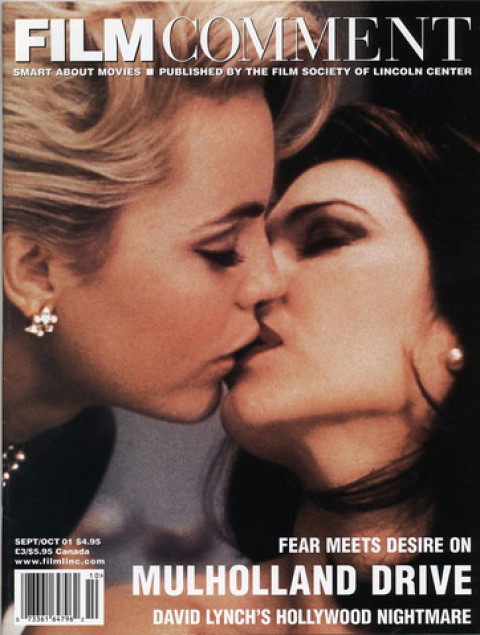
Savoir Faire
For the last four decades Jacques Rivette has returned repeatedly to the image of the stage onscreen. In his films, it’s a place of endless possibility, and a perfect setting to bring complex human emotions to life. Although filmed theater easily lends itself to paroxysms of self-reflexivity—something Rivette certainly understands—the director has no interest in formalism per se. He’s more attuned to life, love, and the obligatory misunderstandings that can happen in the space between the world and its representation. Actors caught “in the act” reveal our true nature.

Va savoir begins in total blackness. A spotlight pierces the dark. A leg steps into the beam, and then full illumination reveals the enigmatic Camille (Jeanne Balibar), an actress performing in Paris as a member of a traveling theater group. She fled the city a few years earlier to escape from her philosopher boyfriend Pierre (Jacques Bonnaffé). He, like all good philosophers, has a Heidegger problem. Camille is currently involved with Ugo (Sergio Castellitto), her wizened and slightly unkempt director and co-star. He has a Camille problem. The Camille/ Ugo/Pierre triangle forms the cornerstone of an ever-growing fractal construct of psychosexual innuendo. The entanglements include Do (Hélène de Fougerolles), a grad-student Aphrodite who engages in a mutual enchantment with Ugo; Do’s half-brother Arthur (Bruno Todeschini), a petty thief whose sexual proclivities apparently extend to all the film’s female characters; and Sonia (Marianne Basler), wife of Pierre, teacher of children’s ballet, and a woman who surprises herself when she forms an alliance with Camille. Anyone, at any point, could be in bed with anyone. But this is a true comedy of manners, a mode in which characters are most likely to sleep alone.
Ugo and Camille have come to Paris to perform As You Desire Me (in the original Italian!). Pirandello’s title sums up much of the restrained hysteria surging through Va savoir. Actors, obviously, are objects of desire even after the curtain closes. To satisfy both sides of the equation they must be willing to discard bits of themselves to please their audience—be it anonymous or intimate. Who do you want me to be today? Which act must I perform to retain your thrall? Even though it may all be pure illusion, the situation by no means implies a world without foundation. There are still hard and fast rules. For instance, Ugo allows Camille to visit with Pierre, just as Camille allows Ugo to spend time alone with the all but irresistible Do. The problem is not what happens, but conduct after the fact. Camille demonstrates it most clearly. When Ugo questions her about her potentially amorous adventures with Pierre, he commits hubris. Their love is free as long as there are no jealous questions. Camille gets very angry. (Even though she has nothing to hide.)

A director is, to some degree, a dictator. “Dictatorship is the extreme form of jealousy,” declares Ugo. He realizes all too clearly that his dictates for Camille must remain stage-bound. In the real world, she is beyond his control, unless, of course, he relinquishes it. Only then is she all his. This is the sort of revelation that the characters either actively seek or stumble across; and they all do so using Pirandello’s play as if it were some sort of oracle. Those who are not in it will attend at various points during the run. When Sonia goes you can see in her eyes a desperate need to understand—not the meaning of the play, but the key it holds to determining her own position in the tumult of plot complications. Arthur, after he goes, announces, “I am the unknown.” And so on. After each performance Camille’s dressing room becomes a confession booth for each character. Their varied responses to the play quickly turn into self-analysis.
Although the acting and recombinant twists of the plot dance with spontaneity, Rivette’s mise-en-scène is precision exemplified. Every move is choreographed and framed with surgical accuracy. And the subsequent phenomenology of space astonishes. The stage is at the hub of all activity, a tabula rasa/void connected to all the streets, rooms, and even rooftops of Paris. Architecture comes alive at every turn. Doorways become portals to desire; rooms, especially those lined with books, become arenas; and staircases.· Rivette has a thing for staircases. (Discussing his film Secret défense with Frédéric Bonnaud, Rivette spoke of staircases as characters: “I chose the house where we filmed because of the staircase. I think it’s where all the dramatic loose ends come together, and also where they must resolve themselves.”) The opportunity to ascend or descend a stairway somehow frees Rivette characters to perform anything from spasms of absurd body-language to inspired bursts of soliloquy. Early in Va savoir, on the stairs backstage at the theater, Camille quips to herself, “It’s more whim than drama.” And whim is closer to the heart of the matter than any artifice.
To understand the historical poignance of Va savoir, it’s helpful to remember that the Nouvelle Vague began, not that paradoxically, before the Nouvelle Vague began. (Bear with me.) The film covers ground already explored by a director who was at the peak of his power before Rivette switched from critic’s pen to director’s camera. Jean Renoir’s 1952 film The Golden Coach, just like Va savoir, begins and ends on a stage. It is no coincidence that Renoir’s female lead, Anna Magnani, plays a stage actress named Camilla. François Truffaut, in a review of The Golden Coach, wrote: “The entire film is turned inside out like a glove, but since the glove had already been turned inside out in the opening minutes, it is now right side out, and everything is in order.” That statement, and the idea of a redemptive restoration of order, applies with equal grace to Rivette’s film. It’s great to see a breathless master, at age 73, bring the Nouvelle Vague into the 21st century. Not to mention doing so with a bona fide masterpiece.







